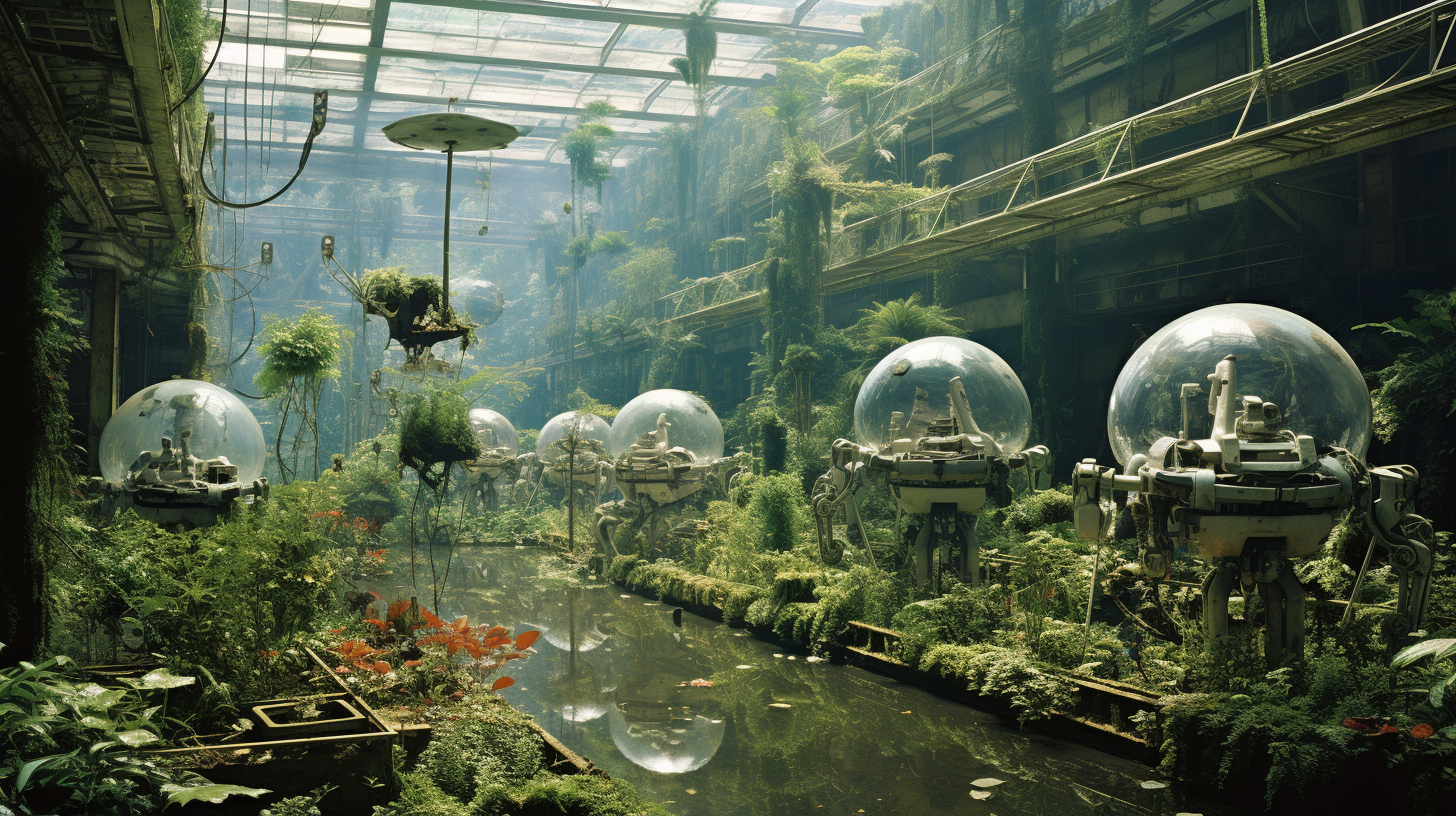In a world where green canopies have yielded to grey desolation and the chirping of birds has been replaced by the hum of machines, one concept rings with an eerie resonance: mechanized gardens. In these sprawling complexes of steel and silicon, fruits hang from metallic branches, and vegetables are nurtured by artificial pollinators—a stark epitome of life’s tenacity amidst ecological mourning.
The dawn of automation in agriculture isn’t new, but its role has become perilously pivotal. With pollination systems teetering on the verge of collapse, as noted in our recent discussion of the ‘Phantoms of Fertility,’ and hydroponic empires rising from traditional agriculture’s ashes, the question looms: can technology truly step in where nature has stepped out?
Imagine acres of indoor farmlands, meticulously monitored by sensors, and irrigated by a labyrinth of pipes carrying life, not water. This isn’t a futurist’s dream; it’s a reality for those like Cassandra Green, who we introduced in ‘The New Hydroponic Empires,’ who have cast their lot with hydroponics to stay afloat in these times. But it goes beyond merely growing plants without soil.
Enter the realm of advanced robotics. These mechanical marvels emulate the acts of pollinators, swirling between plants with algorithmic precision. They may lack the grace of a butterfly or the industrious spirit of a bee, but their electronic efficiency has become an adhesive patch on the gaping wound left by declining insect populations.
Yet, as with every remedy, side-effects persist. Where once a multitude of species coexisted, now a monoculture of machines whir. While Green’s transition to hydroponics presents a beacon of ingenuity, the nuanced dance between flora and fauna cannot be fully replicated by gears and circuits. There is an intangible essence to natural pollination, a complex symbiosis where every flutter and buzz contributes to the terrestrial tapestry.
It’s a paradox of progress; as we marvel at automated harvesters and drone shepherds keeping watch over our contrived pastures, we can’t help but lament the loss of the very essence they replace. In the realms of our ‘Mechanized Gardens,’ the ground is fertile but the soul is barren. We consume the fruits of necessity, each bite a reminder of the verdant past now digitized into sterile oblivion.
And yet, despite our adroit adaptation and engineered ecosystems, a question gnaws at the minds of those who witness this transformation: Does this techno-fix offer salvation or merely delay the inevitable collapse? With every robotic bee that takes flight, we face the reflection of our own making—innovation born from desperation, life sustained by the mechanical heartbeat echoing through chambers where nature once thrived.
Speculations of super-pollinators, akin to the ‘super-corals’ once hoped to be our underwater saviors, offer a glint of futuristic reprieve. Yet, this is the present—and these machinations, our current chapter. The ‘Mechanized Gardens’ speak volumes, not of human triumph, but of a requiem for the Earth’s bountiful past,
In a shadowed corner of a gleaming greenhouse, a solitary, real flower blooms—a stark anomaly amidst its engineered companions. Its resilience is a whisper from the Earth, perhaps a plea, a coded message pleading for reconciliation with its forsaken partners: the bees, the butterflies, the birds, and the bats.
We stand at a crossroads where technological mastery shackles hands with ecological devastation, creating a paradox too intricate to unravel. As we cast our gaze over this automated horizon, we must ask ourselves not if we can, but if we should continue down this path of synthetic sustenance.
